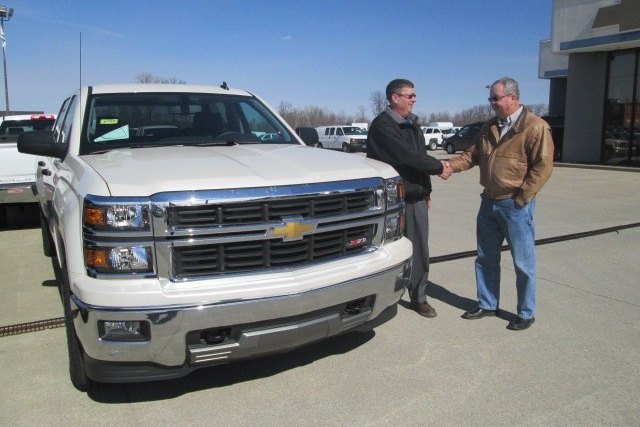The New Benefits of Brand Loyalty

For the most part, the major benefit of brand loyalty is not getting into an argument with your family members at the dinner table. Grandpa worked for General Motors, Dad buys Chevy exclusively, and you decided not to buck the trend. You even bragged about Aunt Beth helping you get a sweet deal on that new Malibu, while everyone nodded in approval between bites of turkey.
However, there are more tangible rewards for sticking with a singular auto brand. Now that the Western market has surpassed peak growth, manufacturers know that it’s going to be a lot harder to reel in new customers. They’ve decided to shift tactics by offering incentives to existing customers in the hopes that they won’t leave them the next time they need a fresh vehicle.
Earlier this year, General Motors launched its My GM Rewards loyalty program. The points-based program rewards customers for signing up, using OnStar’s new services, purchasing a new vehicle, or servicing an older one. These points can then be used similarly to Chuck E. Cheese’s arcade tokens, an Amazon Rewards, or Dave & Buster’s Power Card, as they are not redeemable anywhere else.
Rewards can go towards repairs and servicing or even the purchase of a new vehicle. For example, 100,000 points translates into a $500 allowance toward a new vehicle. The hope is that by having customers to earn them through continuing to use GM’s services, the company can earn some extra scratch while simultaneously setting up modest incentives on a new car.
“We are in the post-record time for vehicle sales,” Michelle Krebs, Autotrader executive analyst told Automotive News. “The pie is not growing, it’s shrinking. So it is critically important for brands to hold onto their loyal buyers rather than going after new ones.”
How well this is working for GM is unclear, as corporate isn’t sharing specifics on the new program. However, dealerships (who are charged a small percentage of the customer revenue) are being encouraged to sign customers up and Mike Bowsher, chairman of the Chevrolet National Dealer Council, said the program has been successful thus far. “It’s a great tool to drive traffic back to the stores,” he said. “For the most part, the dealers like it — especially in the service, parts and accessories area … We’re going to continue to grow this.”
Meanwhile, Ford is launching a program of its own via its FordPass app. While it may or may not function identically to GM’s points, the reasoning is identical. Ford realized that it was cheaper to hold onto existing customers than chase down new ones. Automotive News even cited data from Harvard Business Review that claimed acquiring a new customer would cost automakers anywhere from 5 to 25 times more than retaining an existing one.
“When we did all the data analytics, it became really clear: A loyal owner is so much easier for us to do business with than trying to get a customer from someone else,” Jim Farley, Ford’s president of global markets, told dealers during a meet in Las Vegas this month. “It was a big ‘aha’ moment for us.”
Ford’s still working on it as part of its restructuring program. However, when it rolls out in earnest, FordPass customers can expect to see perks resulting from brand-based purchases and adherence to the automaker.
[Image: General Motors]

A staunch consumer advocate tracking industry trends and regulation. Before joining TTAC, Matt spent a decade working for marketing and research firms based in NYC. Clients included several of the world’s largest automakers, global tire brands, and aftermarket part suppliers. Dissatisfied with the corporate world and resentful of having to wear suits everyday, he pivoted to writing about cars. Since then, that man has become an ardent supporter of the right-to-repair movement, been interviewed on the auto industry by national radio broadcasts, driven more rental cars than anyone ever should, participated in amateur rallying events, and received the requisite minimum training as sanctioned by the SCCA. Handy with a wrench, Matt grew up surrounded by Detroit auto workers and managed to get a pizza delivery job before he was legally eligible. He later found himself driving box trucks through Manhattan, guaranteeing future sympathy for actual truckers. He continues to conduct research pertaining to the automotive sector as an independent contractor and has since moved back to his native Michigan, closer to where the cars are born. A contrarian, Matt claims to prefer understeer — stating that front and all-wheel drive vehicles cater best to his driving style.
More by Matt Posky
Latest Car Reviews
Read moreLatest Product Reviews
Read moreRecent Comments
- Fred This is one car I never see anymore. Where did they all go?
- Daniel Bridger The increased cost of electricity is raging faster than the government's manipulation of ICE fuel.
- Zipper69 Why the choice of a four door shell.Packing this tech into Stinger would have been awesome.
- Eric I have no desire to have an EV. Too expensive, no charging facilities within 50 miles are even planned, unproven technology, arguably even more environmentally harmful than ICE vehicles. Besides being a status symbol and to signal virtue, what's to like?
- Zipper69 Alfa Romeo Europa


































Comments
Join the conversation
Profit in business comes from repeat customers, customers that boast about your project or service, and that bring friends with them. W. Edwards Deming Wasn't ford supposed to have been one of the early adopters of Deming's philosophy of Continuous Improvement?
I am not the kind of enthusiast who has much brand loyalty. Each time I am looking for a vehicle, my criteria are VERY objective, and I will shop until I find the vehicle that best fits that criteria. The only brand issues I have are a complete allergy to GM products. My last experience with them (a 1997 Chevy) was so awful, I promised myself to NEVER subject myself to such torture again.